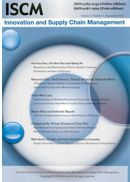Smart factory became one hot topic both in research and practice. Technologies supporting smart factory can be divided into four categories, i.e., automation, information and communication, intelligence and optimization. These four technologies can be grouped into hard technologies and soft technologies. Soft technologies mainly supported by management science and industrial engineering. The soft technology which mainly used in smart factory, we briefly call the management technology, which can maximize utilization of the hard technologies, therefore it can be seen as the technology on technology. Assuming that a company constructed fully automated factory, however, the automated machines breakdown frequently, many automated machines face to starvation (idling), the automation technology could not contribute competition power of the company. As the same reason, information and communication technology can collect and transfer huge amount of data, however, if the data do not processed on time for supporting correct decision-making, then the value of data will be zero because data collected in factory is perishable. In this research, we focus on the management technology, temping to propose a method to solve major problem which makes gaps between periodic production plan and daily production scheduling. Current production scheduling problem assumes the periodic production plan is given, which may generated by so called MRP (material requirement planning) logic using BOM (bill of material) information. The problems here are that the periodic production planning neither consider precedence constraint of each job, nor consider dependency of processing time with production lot-size. Furthermore, MRP logic require a fixed leadtime as a parameter, therefore, the daily production schedule generated using MRP logic frequently results in infeasible. We propose an integrated production planning model, generating the periodic production plan incorporating daily production scheduling same time. In the proposed model, we introduce varying processing time which depends on lotsize, introduce two different lot-size for each job, and find optimal combination of the lotsize under the given capacity constraint during the planning horizon, while production load is calculated based on the optimal scheduling problem for each combination. Through numerical examination, we justify the proposed model, and analyze trade-offbetween cost increase and operation time of the manufacturing system.
View full abstract
